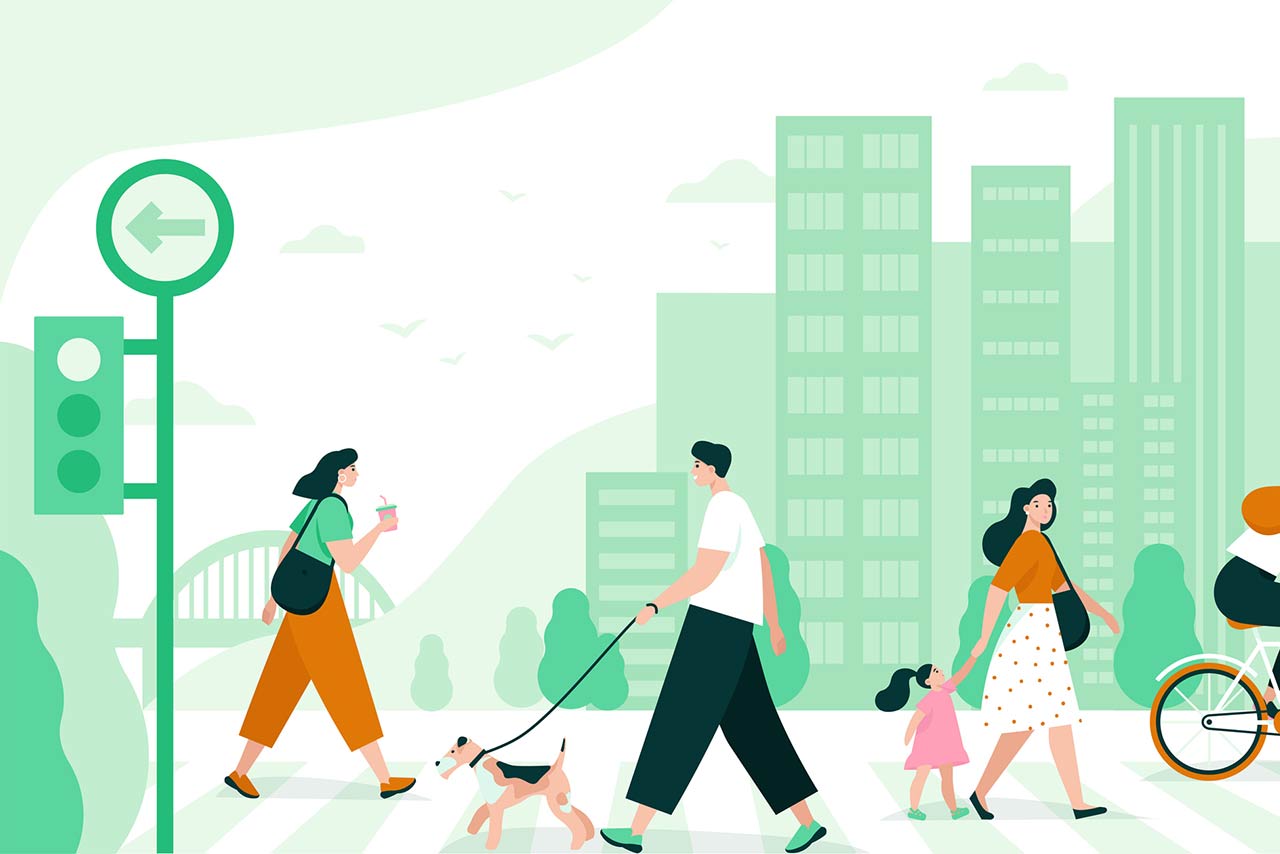How Living in a Walkable Neighborhood Can Improve Your Quality of Life

Walkability not only promotes physical health through regular exercise but also fosters social connections, reduces environmental impact, and offers economic benefits. By delving into the essential components of walkable neighborhoods and addressing the challenges and solutions in promoting walkability, we aim to showcase the transformative potential of embracing a walkable lifestyle for enhancing overall quality of life.
Defining Walkability
When we talk about walkable neighborhoods, we’re referring to areas where residents can easily walk to access daily necessities, entertainment, and services without needing a car. It’s all about convenience within strolling distance.
Historical Context of Walkable Communities
Walkable communities have been around since ancient times, where cities were designed with pedestrians in mind. The rise of car-centric urban planning in the 20th century shifted focus away from walkability, but recent trends are bringing back the charm of walking neighborhoods.
Benefits of Walkable Neighborhoods
Living in a walkable neighborhood can lead to numerous benefits, including improved health, stronger social connections, reduced stress, and a smaller environmental footprint. It’s not just about getting from A to B—it’s about enhancing your quality of life along the way.
Physical Health Impact
Walking is a simple yet effective form of exercise that can boost heart health, improve stamina, help with weight management, and reduce the risk of chronic conditions like diabetes and hypertension. Plus, it’s easy on the joints!
Mental Health Benefits
Taking a stroll around your neighborhood can do wonders for your mental well-being. It’s a great way to clear your mind, reduce anxiety, improve mood, and enhance overall cognitive function. Think of it as a mental refresh button.
Reducing Chronic Diseases Through Walking
Regular walking has been shown to lower the risk of developing chronic diseases such as heart disease, stroke, and certain types of cancer. It’s a simple yet powerful way to invest in your long-term health and well-being.
Building Stronger Social Connections
In walkable neighborhoods, bumping into neighbors, engaging in impromptu chats, and participating in community events are all part of the charm. It fosters a sense of belonging and creates a tight-knit community.
Promoting a Sense of Belonging
Walking around your neighborhood allows you to become more familiar with your surroundings and the people who live there. This familiarity fosters a sense of belonging and can lead to a greater investment in your community.
Enhancing Community Engagement
When you can easily walk to local shops, parks, and community centers, you’re more likely to participate in local events and support neighborhood businesses. This kind of engagement strengthens the community fabric and enhances the overall quality of life for residents.
Reducing Carbon Footprint
By promoting walking and cycling as primary modes of transportation, walkable communities help reduce reliance on cars, leading to lower greenhouse gas emissions and a smaller carbon footprint. It’s a small step that makes a big environmental impact.
Promoting Sustainable Transportation
Walkable neighborhoods often have access to public transportation options and infrastructure that supports biking and walking. This promotes sustainable transportation choices, reduces traffic congestion, and makes the area more eco-friendly.
Preserving Green Spaces and Biodiversity
Encouraging walking in neighborhoods means preserving green spaces, parks, and natural areas that are crucial for biodiversity and overall environmental health. It’s a win-win situation where both humans and nature thrive together.
Increased Property Values in Walkable Neighborhoods
Living in a walkable neighborhood can do wonders for your property value. Who wouldn’t pay extra to be within strolling distance of a cozy cafe or a charming park? It’s like having a built-in charm upgrade for your home sweet home!
Cost Savings on Transportation and Healthcare Expenses
Say goodbye to shelling out big bucks for gas or endless doctor visits. By living in a walkable area, you can save some serious cash on transportation and healthcare expenses. Plus, you’ll get your daily dose of exercise just by walking to grab your morning coffee. Win-win!
Boosting Local Businesses and Economic Vitality
When you live in a walkable neighborhood, you’re not just improving your own quality of life – you’re also giving a high-five to local businesses. By strolling around and shopping locally, you’re helping to boost economic vitality in your community. It’s like being a walking superhero for small businesses!
Bottom-line
By prioritizing walkability in urban planning and community design, we not only enhance our own well-being but also contribute to a more sustainable, connected, and vibrant society. Embracing a walkable lifestyle is not just a personal choice but a collective investment in creating healthier, happier, and more resilient communities for generations to come. Let’s step out and walk the talk towards a better quality of life for all.